Be a friend of the giant clams
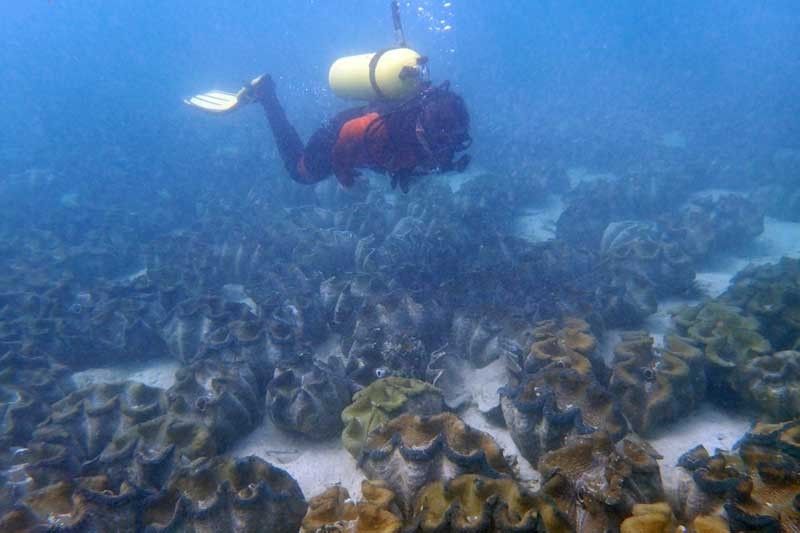
MANILA, Philippines — The gentle giants are looking for new friends.
With over 40,000 giant clams or taklobo currently living at the Silaqui Ocean Nursery in Pangasinan, scientists at the UP Marine Science Institute (MSI) have begun looking for ways to harness support to take care of these endangered marine animals.
One way of doing it, according to Bolinao Marine Laboratory (BML) deputy director Cecilia Conaco, is through an initiative that would allow people to “adopt” a giant clam for as little as P200.
“To make it more sustainable, we thought it would be nice to hit two birds with one stone,” Conaco tells STARweek. “On one hand, maybe we can spread awareness about the clams and marine conservation. On the other hand, involve more people into taking care of the clams.”
Initially planned as a small project for students and partners, the Adopt-A-Clam initiative unexpectedly became a hit online, drawing interest from thousands who want to be involved in the project.
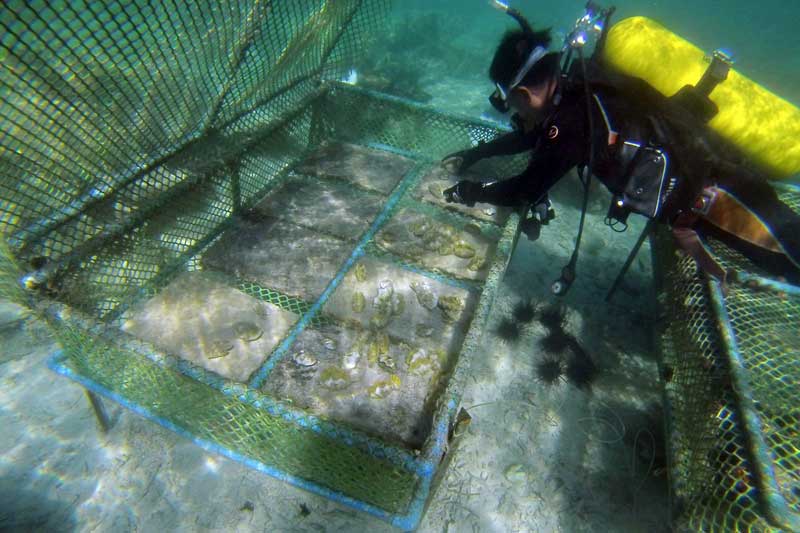
Tending to the juvenile clams in cages
“I did not expect that a lot of people would actually be interested. We had to limit (the number of adoptions) because we do not have enough manpower to handle everything,” she notes.
With only four permanent staff doing various work at the laboratory, Conaco says they had to redesign the initiative to be able to properly handle its implementation.
Soon, the redesigned Adopt-A-Clam project will be publicly rolled out and allow more people to take part in the initiative.
According to BML, there will be four options for interested sponsors: P200 for Clam Friends, P500 for Clam Champion, P1,500 for Clam Patron and P5,000 for Clam Benefactor.
Each “adopted” clam will be tagged with the name of the sponsor and will be placed in a special area in the nursing hatchery. Donors will receive online adoption kits and could take part in hatchery tours and ocean nursery visits, depending on the adoption package.
“We will take care of the adopted clams and regularly track their growth to adulthood,” says BML. “Your generous donation to the BML Adopt-A-Clam program will support the giant clam conservation efforts of the UP MSI. It will help us care for giant clams at the Silaqui Ocean Nursery, the largest population of giant clams in the Philippines.”
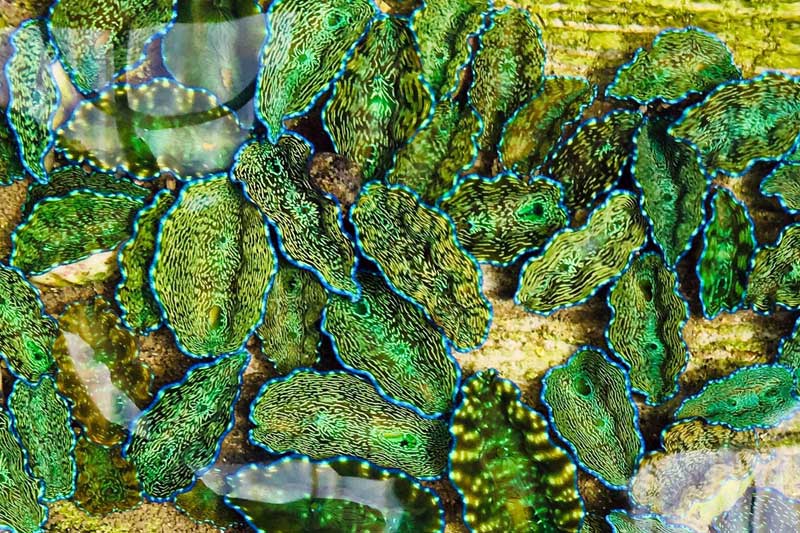
Tridacna derasa juveniles.
The BML clam conservation project traces its roots to a 1985 initiative of then-UP MSI director and now professor emeritus Edgardo Gomez.
At the time, surveys of marine biodiversity in the Philippines showed significant decline of the natural population of Tridacna gigas, the largest giant clam species in the world.
Gomez received a grant that enabled him to import larvae and juveniles from the Solomon Islands and Australia to serve as breeders for future generations of giant clams.
Almost four decades later, these breeders have spawned thousands of “children” now ready to be sent to areas where giants clams of the past used to thrive.
“Unfortunately, that’s really expensive. It is challenging to transport (the giant clams),” says Conaco. “We want to restock, for example, in the West Philippine Sea. They are normally there. It’s their natural habitat.”
Because of the financial constraints, she says restocking of clams is often limited to areas near resorts or in marine reserves where administrators pay for the packaging, transport and other logistical requirements.
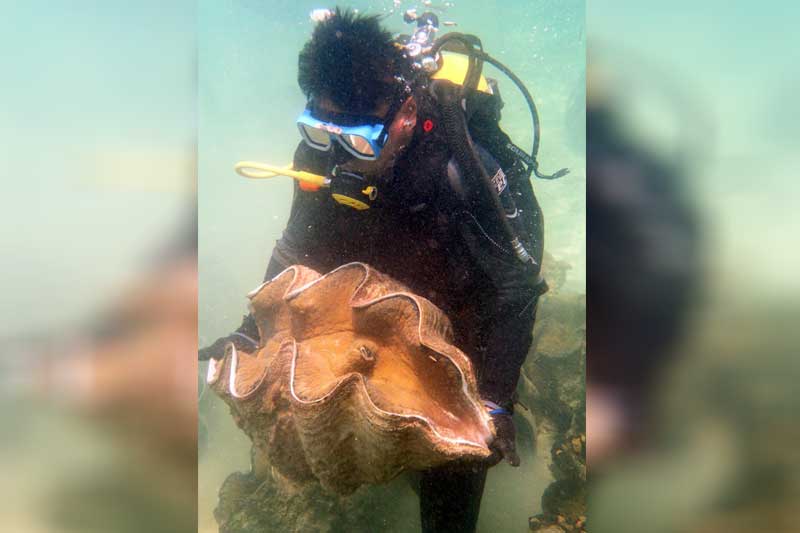
A diver conducts maintenance at the ocean nursery.
“It’s still a way to continue bringing the clams all over,” she says, noting that they have already restocked about 50 sites through these partnerships.
Recently, the UP MSI received funding that would enable them to check on the status of the giant clams that they have previously sent to different areas across the country.
Among those that they would verify, Conaco says, are anecdotal reports of possible spawning of giant clams in the wild.
If confirmed, the scientist says there would be an immediate need to conduct educational programs in coastal communities as one of the barriers that prevent juveniles from reaching maturity is the unintentional harvesting by those who cannot distinguish the giant clams from their more common, smaller relatives.
More than its iconic stature, Conaco says giant clams play a significant role in marine ecosystems, especially in coral reefs where fish live and reproduce.
“They are central players in the coral reefs. They have a lot of important roles,” she says. “They provide a home for the fish. In some areas where we restocked, we have anecdotal reports that the fish has increased. They filter the water to a certain extent – they clarify it, they recycle nutrients.”
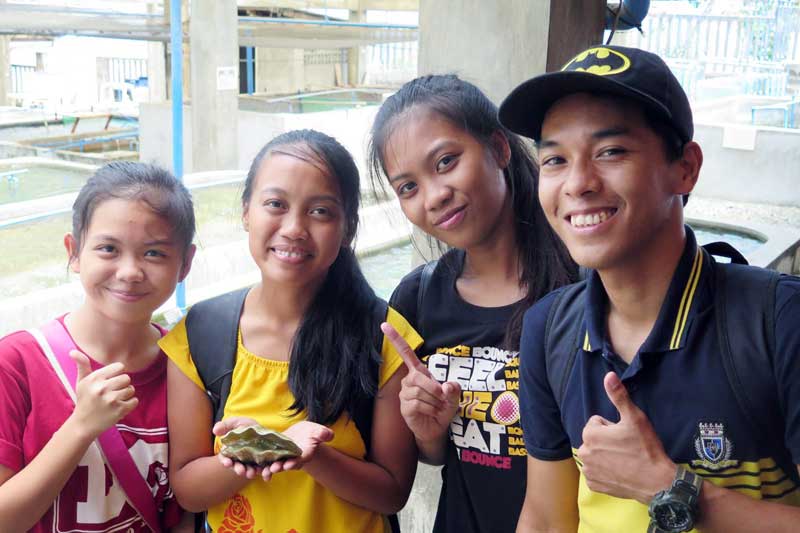
Some new clam “parents” with their adopted clam.
Clam shells also serve – literally – as the backbone of the marine ecosystem, becoming skeletons for corals to attach to as they grow over time.
“They build up the reef, allowing more organisms to attach. They make it more stable. They are really quite central to the coral reef,” she says.
With more people becoming interested in giant clam conservation, Conaco says they hope to be able to restock more giant clams in different marine ecosystems in the country.
They are also hoping that the BML will receive more grants to fund research not just on clam conservation but on the entire marine biodiversity protection.
There is a long way to go, Conaco admits. But with new “clams friends” at hand, how difficult can it be?
* * *
For inquiries on the Adopt-A-Clam project, contact the UP MSI BML at [email protected] or follow their Facebook page at https://facebook.com/upbolinaomarinelab/
- Latest
- Trending


















